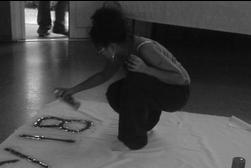Sunday, 30 November 2008
What is Copyright?
Copyright was initially conceived as a way for governments in Europe to restrict printing; the contemporary intent of copyright is to promote the creation of new works by giving authors control of and profit from them.
Copyright has been internationally standardized, lasting between fifty to a hundred years from the author's death, or a finite period for anonymous or corporate authorship; some jurisdictions have required formalities to establishing copyright, most recognize copyright in any completed work, without formal registration. Generally, copyright is enforced as a civil matter, though some jurisdictions do apply criminal sanctions.
Most jurisdictions recognize copyright limitations, allowing "fair" exceptions to the author's exclusivity of copyright, and giving users certain rights. The development of the Internet, digital media, computer network technologies, such as peer-to-peer filesharing, have prompted reinterpretation of these exceptions, introduced new difficulties in enforcing copyright, and inspired additional challenges to copyright law's philosophic basis. Simultaneously, businesses with great economic dependence upon copyright have advocated the extension and expansion of their copy rights, and sought additional legal and technological enforcement.
My Presentation
The creative and media group was told to create a presentation about the history of Bermondsey. Everyone was aloud to choose anything about the area. I chose to do the whole area on how poor the area used to be and how the area is now.
In my presentation I made a poster and a power point presentation. In the poster I mainly based it on how the living was in the past. When I presented my project I first spoke about Jacobs Island and how the area was a dirty smelly place. Then got into more detail about the Bermondsey area.
I think that my presentation worked out well for me because I kept the audience entertained and made sure I created a colourful presentation. If I could re-do my presentation I think I’d slow down rather than rush to the next subject.
**UNDER CONSTRUCTION**
Wednesday, 19 November 2008
Installation
Scene one
Market – This will include the audience because it’s an open market. This will show the audience how the market was like before in the 19th century.
Characters – A loud area with people selling food and people purchasing food.
Narrator – This person will include what just happened in the scene.
Scene two
Before the World War 1 – The shelter and the bombing.
Characters – A couple of actors acting out a little short scene pretending that the bombing is on and how scared they are, hiding in their small shelter.
Narrator – This person should include what happened in the past and how it affected loads of people.
Scene three
World War 2 – The rationed room in the shop collecting food.
Characters – Loads of people waiting to collect their food, and how their books will be signed off. The audience will also have a taste of what it was also like by looking at the front desk and collecting their own rationed food.
Narrator – This person will say how busy the place was when people collected their food and what just happened in the scene.
Scene four
The present now – how the area is like now, sounds of the river and the interviews from the past.
Characters – There will be no characters in this scene.
Narrator – There will not be a narrator in this section.
Every scene should last up to 10 minutes!!
Tuesday, 11 November 2008
What is marketing? [4.11.08]
The six thinking hats!!
White - The facts
Red - Feelings
Green - Creative Ideas
Black - Negatives
Yellow - Positives
Blue - Conclusions
Each "Thinking Hat" is a different style of thinking.
White Hat:
With this thinking hat, you focus on the data available. Look at the information you have, and see what you can learn from it. Look for gaps in your knowledge, and either try to fill them or take account of them.
This is where you analyze past trends, and try to extrapolate from historical data.
Red Hat:
Wearing the red hat, you look at the decision using intuition, gut reaction, and emotion. Also try to think how other people will react emotionally, and try to understand the intuitive responses of people who do not fully know your reasoning.
Black Hat:
When using black hat thinking, look at things pessimistically, cautiously and defensively. Try to see why ideas and approaches might not work. This is important because it highlights the weak points in a plan or course of action. It allows you to eliminate them, alter your approach, or prepare contingency plans to counter problems that arise.
Black Hat thinking helps to make your plans tougher and more resilient. It can also help you to spot fatal flaws and risks before you embark on a course of action. Black Hat thinking is one of the real benefits of this technique, as many successful people get so used to thinking positively that often they cannot see problems in advance, leaving them under-prepared for difficulties.
Yellow Hat:
The yellow hat helps you to think positively. It is the optimistic viewpoint that helps you to see all the benefits of the decision and the value in it, and spot the opportunities that arise from it. Yellow Hat thinking helps you to keep going when everything looks gloomy and difficult.
Green Hat:
The Green Hat stands for creativity. This is where you can develop creative solutions to a problem. It is a freewheeling way of thinking, in which there is little criticism of ideas. A whole range of creativity tools can help you here.
Blue Hat:
The Blue Hat stands for process control. This is the hat worn by people chairing meetings. When running into difficulties because ideas are running dry, they may direct activity into Green Hat thinking. When contingency plans are needed, they will ask for Black Hat thinking, and so on.

*1st idea -
White hat - It could work as the music department done some sort of event simillar to what we are doing. So it could work.
Red hat - It was a good idea.
Blue hat - It created a good
Green hat - Theatre, lunch time, free food. Although some students might not come in their lunch time.
Yellow hat - Big screen and a big space. At lunch to make students go in the theatre to watch the installation and get free food.
Black Hat - Too much going on in one room. Why would people come during lunch time?
*2nd idea -
White hat - Suggested it should be in the music department because it has a whole timeline feeling as all classrooms are in one line.
Red hat - Felt as if the rooms might be in-use although its a great idea.
Blue hat - Said that the different rooms is a great idea although having it in the music department is a small area.
Green hat - Create an installation by using a variety of rooms to create a timeline, as if the students are walking through time of Bermondsey. These room will have to be connected so that it doesnt come in confusion. Each room should have at least two people working together so that its not just one person. Two ideas/brains in one installation for each room. This will need at least 4 rooms.
Yellow hat - It was a good idea because then people can have different techniques of installation in each room.
Black Hat - It could lead into confusion and some rooms will need to be used for other classes. It will be hard to find other classrooms for the other students classes.
*3rd idea -
White hat - Creating the installation outside could be a good idea, because its something different.
Red hat - Noise level can be an issue. Distracting other class rooms and other noises from when the installation is playing.
Blue hat - It could work although some people wouldnt want to go outside in a bad weather. Although on the other hand if its during lunch or break it could attract people by woundering whats in that tent.
Green hat - It could be in the outside eitber around the college, coverd by tents.
Yellow hat - It would be a great idea because then people can see whats going on and create a crowd in the tent to watch the installation.
Black Hat - Outside wont work because people moan that its cold.



.jpg)